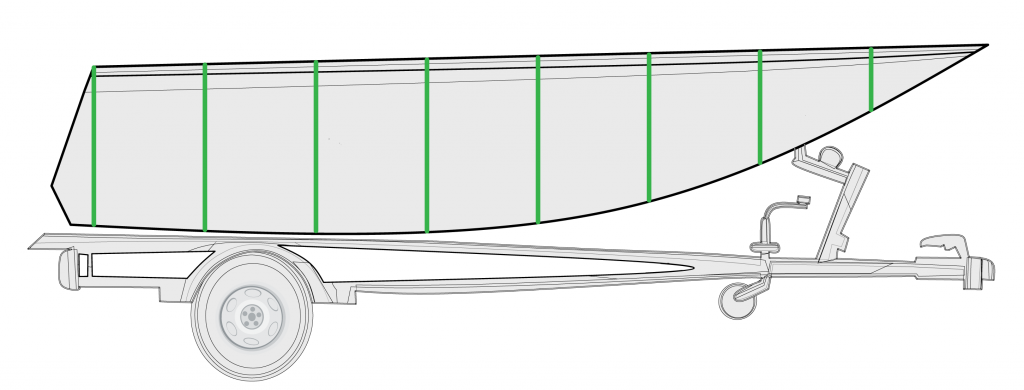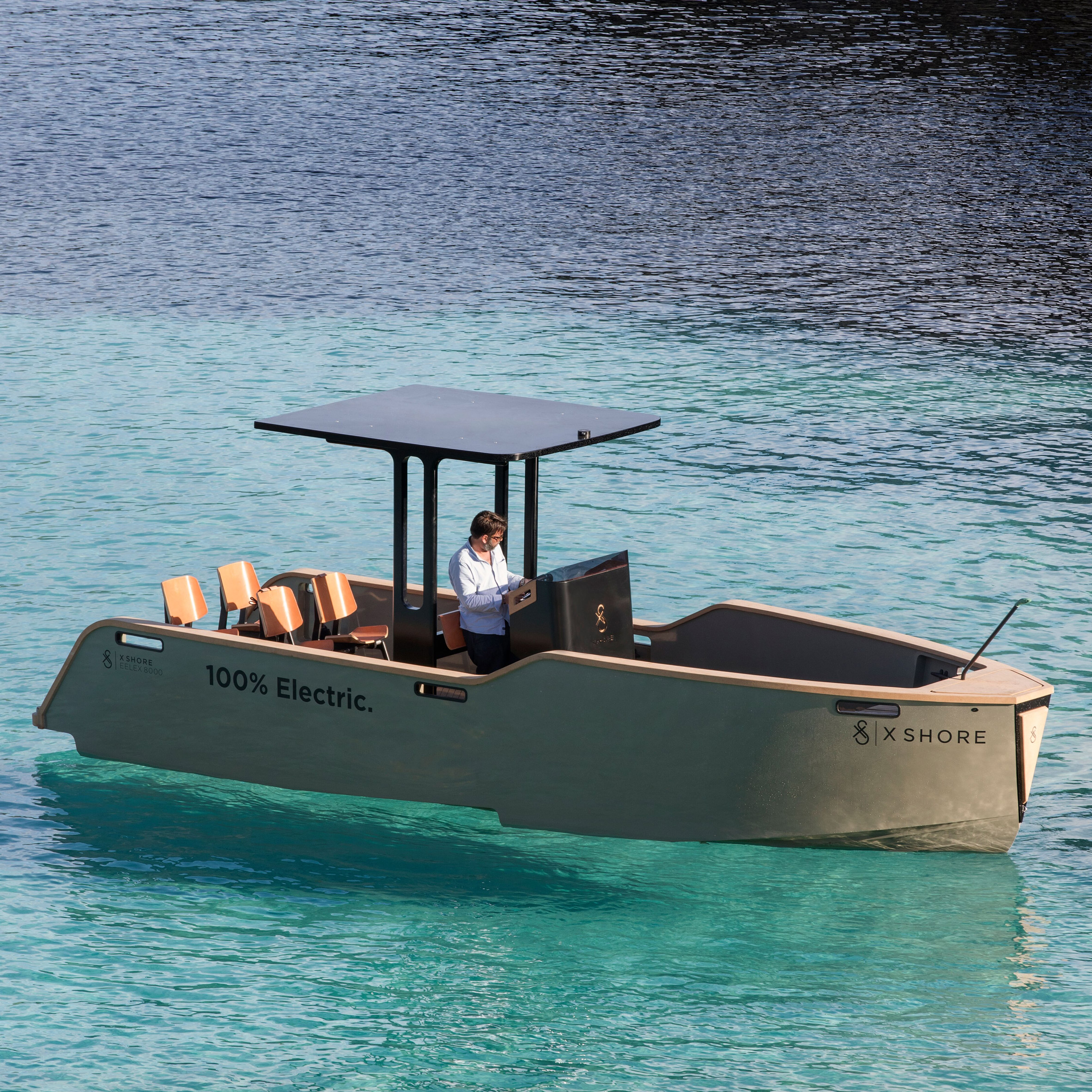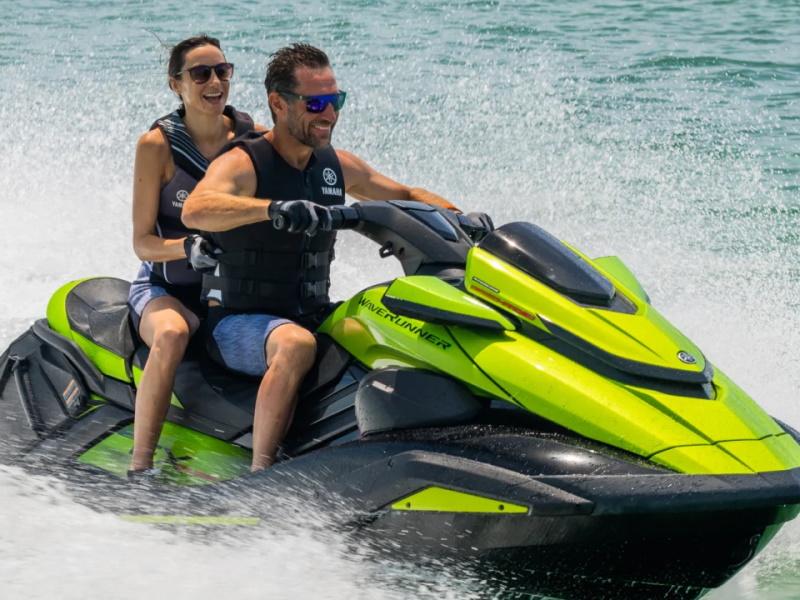Gunwale Reinforcement: A Critical Step in Boat Maintenance
The gunwale, also known as "gunnel," is a critical component of any boat or ship. It's the upper edge of a vessel's side where the hull meets the deck. This reinforced edge has been a key feature of watercraft for centuries, evolving from its origins in naval warfare to its modern-day uses in various types of boats.

Gunwales play a vital role in a vessel's integrity and performance. They strengthen the hull, offer attachment points for equipment, and provide a handhold for crew members moving about the boat. On smaller craft, gunwales are often used as seating areas or for securing gear. Their design and materials can vary widely depending on the boat's size, purpose, and construction method.
Understanding gunwales is essential for boat owners and maritime enthusiasts alike. Whether you're navigating rough seas or simply enjoying a day on the water, the gunwale is always there, silently doing its job. Its importance in boat design and function makes it a fascinating subject for anyone interested in maritime engineering or boating in general.

Key Takeaways
- Gunwales provide crucial structural support where a boat's hull meets its deck
- They serve multiple functions, from strengthening the hull to offering attachment points for equipment
- The design and materials of gunwales vary based on a boat's size, purpose, and construction method
Historical Evolution of Gunwales
Gunwales have a rich history tied to shipbuilding and naval warfare. Their development reflects changes in ship design and combat tactics over centuries.
Etymology and Origin
The term "gunwale" comes from "gun ridge" or "gun wale." It first appeared in the 16th century. Ships needed strong edges to support heavy cannons. Builders added thick planks along the top of the hull. These planks formed a ridge where guns sat.
Over time, "gun wale" became "gunwale." People often say it as "gunnel." The word stuck even as ship designs changed. Today, gunwales are on all kinds of boats, not just warships.
Gunwales in Sailing Warships
Sailing warships used gunwales to great effect. The planks helped spread out the force of cannon fire. This kept the ship's hull from cracking under stress.
Gunwales also gave crew members a place to stand during battle. They could reload cannons and fight more easily. As ships got bigger, gunwales became more complex. Some had multiple layers for added strength.
By the 19th century, iron ships started to replace wooden ones. Gunwales changed too. They became part of the overall hull structure. This made ships stronger and more seaworthy.
Design and Structure
Gunwales play a key role in a boat's structure. They add strength and shape while serving practical functions for boaters. Their design and materials vary based on the vessel type and intended use.
Gunwale Anatomy
The gunwale forms the upper edge where a boat's hull meets the deck. It typically runs the full length of the boat from bow to stern. On many boats, the gunwale consists of an inner and outer part. The inner gunwale faces the boat's interior, while the outer gunwale forms the topmost part of the hull.
Between these may be a core material for added strength. Some designs include a rub rail along the outer edge to protect the hull. Gunwales often incorporate features like cleats, rod holders, or tracks for mounting accessories.
Materials and Construction
Boat builders use various materials for gunwales based on the vessel's needs. Wood remains popular for classic and custom boats. It offers a traditional look but requires more upkeep. Aluminum is common on fishing boats and work vessels. It's lightweight and durable.
Fiberglass and other composites are used on many modern pleasure craft. They allow for sleek designs and low maintenance. Some builders use plastics or vinyl, especially for smaller boats. These materials resist rot and are easy to clean.
Construction methods vary. Wooden gunwales may be steam-bent or laminated. Metal gunwales are often welded or bolted in place. Composite gunwales are typically molded as part of the hull or bonded on later.

Functional Specifications
Gunwales must be strong enough to withstand impacts and the stresses of regular use. They need to support hardware like cleats and rails. The width and height of gunwales affect how easy it is to move around the boat's edges.
On sailboats, gunwales may incorporate toe rails for safety when the boat heels. Fishing boats often have wider gunwales to allow anglers to walk along the sides. Some gunwales include built-in channels for wiring or plumbing.
The shape of the gunwale affects water flow off the deck. A rounded edge helps shed water, while a flat top may collect it. Designers must balance looks, function, and manufacturing cost when specifying gunwale details.
Role in Vessel Integrity and Performance
The gunwale plays a vital part in a boat's structure and function. It supports the hull, adds stability, and improves safety and handling.
Structural Support and Stability
The gunwale acts as a key structural element. It reinforces the upper edge of the hull, preventing it from bending or warping. This added strength allows the boat to better handle waves and impacts.
Gunwales also widen the boat's top edge. This extra width increases stability, especially in choppy waters. It helps the vessel resist rolling and tipping.
For wooden boats, the gunwale ties together the planks and ribs. This creates a more solid and durable hull structure overall.

Contribution to Boating Safety
Gunwales provide a secure handhold for passengers and crew. This is crucial when boarding, moving around, or in rough conditions.
The raised edge of the gunwale helps keep water out of the boat. It acts as a small wall, deflecting spray and small waves.
Many boats have non-slip surfaces on the gunwales. This reduces the risk of slips and falls when stepping on or off the boat.
Impact on Boat Handling and Performance
Gunwales affect how a boat moves through water. Their shape can influence speed and fuel efficiency.
A well-designed gunwale helps the boat cut through waves more smoothly. This leads to a more comfortable ride and better control.
For smaller boats, gunwales provide a mounting point for oarlocks. This allows for more efficient rowing and steering.
In sailboats, gunwales often house fittings for rigging and sails. This setup improves sailing performance and makes adjustments easier.
Practical Aspects and Usage
Gunwales serve many key functions on boats beyond their structural role. They offer handholds, mounting points, and protect the hull's edge from damage.
Accessibility and Comfort
Gunwales make moving around a boat easier and safer. They provide a gripable edge for balance when walking along the sides. On smaller boats, people often sit on the gunwales while fishing or relaxing.
Some boats have padded gunwales for comfort. This helps when leaning against them or using them as makeshift seats. Wider gunwales can act as walkways on larger vessels.
Gunwales are important safety features too. They create a boundary at the edge of the deck. This helps prevent people and gear from slipping overboard.
Attachment and Storage Solutions
Gunwales are prime spots for attaching boat accessories. Many have tracks or mounting points built in. Common attachments include:
- Rod holders for fishing
- Cleats for tying lines
- Fenders to protect the hull
- Navigation lights
- Grab rails
Some gunwales have built-in storage compartments. These can hold:
- Fishing gear
- Safety equipment
- Boat hooks
- Oars or paddles
Gunwale-mounted accessories keep the deck clear. This improves safety and makes better use of space.
Maintenance and Upkeep
Gunwales need regular care to stay in good shape. Wood gunwales require the most upkeep. They need sanding and refinishing to protect against rot.
Aluminum and fiberglass gunwales are lower maintenance. Still, they benefit from regular cleaning. Use boat soap and a soft brush to remove dirt and salt. Avoid harsh chemicals that can damage finishes.
Check gunwales often for signs of wear or damage. Look for:
- Cracks or splits in wood
- Corrosion on metal parts
- Loose fasteners or fittings
Fix small issues promptly to prevent bigger problems. Replace worn rub rails to protect the edge. Rebed any loose fittings to keep water out.
Customization and Accessories
Gunwale customization offers both style and function for boat owners. Options range from decorative touches to practical add-ons that enhance safety and usability.
Aesthetic Enhancements
Gunwale mats add a pop of color and protect the boat's finish. Some mats use Sunbrella fabric for UV and stain resistance.
Custom embroidered mats display boat names or logos. Popular colors include navy blue, black, and forest green.
Teak inserts give gunwales a classic wooden look. Stainless steel trim adds a modern touch. LED lighting strips can be installed along gunwales for nighttime ambiance and improved visibility.
Functional Add-Ons
Rod holders are a must for fishing boats. Flush-mount or clamp-on styles attach to gunwales for easy access.
Cleats provide tie-off points for fenders and docking lines. Pop-up cleats fold down when not in use.
Cup holders keep drinks secure. Some models swivel to stay level.
Handholds improve safety when moving about the boat. Rubber grips offer a non-slip surface.
Aftermarket Upgrades
Gunwale-mounted electronics include fish finders, GPS units, and VHF radios. Swing-arm mounts allow for adjustable positioning.
Storage boxes fit between gunwales and decks to maximize space.
Rubbing strakes protect gunwales from dock impacts. Made of rubber or PVC, they're easy to replace when worn. Gunwale caps cover exposed wood or fiberglass edges. They are available in various materials and colors to match boat decor.
Installation and Repairs
Gunwales play a crucial role in a boat's structure and appearance. Proper installation and timely repairs help maintain the vessel's integrity and safety.
Replacing Gunwales
Wood gunwales are popular for their classic look and feel. To replace them, remove the old ones carefully.
Sand the mounting surface smooth. Cut new gunwales to size, allowing extra length for trimming. Pre-drill screw holes every 6-8 inches. Apply marine sealant before attaching. Secure with stainless steel screws.
Aluminum gunwales offer durability and low maintenance. They come in pre-cut lengths or coils. Measure and cut to fit. Use rivets or screws to fasten. Ensure a tight fit against the hull.
Composite gunwales blend strength with lightweight properties. Installation is similar to wood, but they don't require sealing. Use manufacturer-recommended fasteners and adhesives.
Common Repair Issues
Rotting affects wooden gunwales. Remove soft spots and fill with epoxy. Sand smooth and refinish.
Cracked gunwales need immediate attention. For minor cracks, clean and fill with epoxy. Larger cracks may require partial replacement.
Loose fasteners can cause leaks. Tighten or replace screws and rivets. Use marine-grade sealant to prevent water ingress.
Corrosion on metal gunwales weakens the structure. Clean affected areas and apply anti-corrosion coating.
Warping can occur in wooden gunwales. Straighten by wetting and clamping. Replace if severely warped.
UV damage fades and weakens materials. Sand and refinish wood, or replace UV-damaged composites.
Preventive Measures
Regular inspections catch issues early. Check for loose fasteners, cracks, or signs of rot. Tighten and seal as needed.
Clean gunwales after each use to remove dirt and salt.
Apply UV-resistant varnish to wooden gunwales annually. This protects against sun damage and moisture.
For aluminum, use anti-corrosion sprays in salt environments.
Store boats properly to reduce stress on gunwales. Use padded supports and cover the boat when not in use. Avoid dragging the boat, which can damage the gunwales.
Address small issues promptly to prevent larger problems. Keep spare fasteners, sealant, and touch-up materials on hand for quick repairs.
Varied Types and Their Specific Functions
Gunwales come in different styles to suit various boat designs and uses. Their shapes and materials can change based on the vessel's purpose.
Gunwales for Different Types of Boats
Canoes often have wooden gunwales that add strength and serve as handles.
Sailing boats may use aluminum or fiberglass gunwales to withstand high loads from rigging.
Center console boats typically have wide, flat gunwales for easy walking around the boat.
Skiffs and flats boats need low-profile gunwales to reduce wind resistance and allow for stealthy approaches when fishing. Bay boats might have taller gunwales to keep water out in choppy conditions.
Some boats use rubberized gunwales for extra grip and comfort. Others incorporate built-in rod holders or cleats into the gunwale design.
Specialized Gunwales for Fishing and Sailing
Fishing boats often feature gunwales with integrated tackle storage or bait wells. These help anglers keep gear organized and easily accessible. Some gunwales include mounting tracks for downriggers or outriggers.
Sailing boats may have extra-strong gunwales to handle the forces from shrouds and stays. Racing sailboats sometimes use carbon fiber gunwales to save weight.
Certain fishing boats have padded gunwales to protect against bumps when fighting fish. Sailing dinghies might use flexible gunwales that bend under sailor's weight for better performance.
Technical Aspects
The gunwale's design and construction involve precise terminology, measurements, and material choices. These elements affect a boat's performance, durability, and aesthetics.
Terminology and Measurements
The gunwale system includes several key components. The sheer strake forms the topmost plank of the hull. The inwale runs along the inside of the boat, while the outwale protects the outer edge.
Measurements are crucial for proper fit and function. The gunwale's height affects stability and freeboard. Its width impacts structural strength and usable deck space.
Boat builders use specific terms for gunwale parts. The cap rail covers the top edge. Scuppers in the gunwale allow water drainage. Rubbing strakes provide extra protection against dock damage.
Material Properties and Choices
Wood remains a popular gunwale material. Ash offers flexibility and shock absorption. Oak provides strength and durability. Both woods require regular maintenance to prevent rot.
Fiberglass gunwales offer low maintenance and consistent performance. They resist water damage and UV rays. However, they lack the classic look of wood.
Some builders use aluminum for lightweight strength. Stainless steel finds use in areas needing extra durability. Composite materials combine strength with corrosion resistance.
Material choice affects a boat's weight, maintenance needs, and longevity. It also impacts the feel and sound of the boat while underway.
Frequently Asked Questions
Gunwales play a vital role in boat design and construction. They serve many functions and have an interesting history. Let's explore some common questions about gunwales.
What are the functional differences between a gunwale and a bulwark in ship design?
Gunwales and bulwarks serve different purposes on a vessel. A gunwale is the top edge of a boat's side, while a bulwark is a vertical extension above the main deck.
Gunwales provide structural support and a place to grab onto. Bulwarks offer protection from waves and improve safety for crew on deck.
Could you explain the etymology behind the term 'gunwale'?
The term 'gunwale' comes from the days of wooden warships. It combines 'gun' and 'wale', an old word for plank.
The gunwale was originally a thick plank that supported the ship's cannon. Over time, the term came to mean the top edge of a boat's side, even on vessels without guns.
What could be considered an appropriate synonym for 'gunwale'?
A common synonym for 'gunwale' is 'gunnel'. This term is often used by boaters and fishermen. Other synonyms include 'topsides' and 'upper strake'. These terms all refer to the upper edge of a boat's hull.
In what ways does a gunwale contribute to the overall structure of a boat?
Gunwales are crucial to a boat's structure. They add rigidity to the hull and help distribute loads.
Gunwales also provide a mounting point for hardware and accessories. They can serve as a handhold for passengers and crew, improving safety on board.
How has the term 'gunwale' evolved in pronunciation to 'gunnel'?
The evolution from 'gunwale' to 'gunnel' is a case of pronunciation simplification. Over time, speakers merged the two syllables into one for ease of use.
This change is common in nautical terms, where practical speech often trumps formal pronunciation.
What distinguishes a gunwale from an inwale on a vessel?
Gunwales and inwales are related but distinct parts of a boat. The gunwale is the outermost top edge of the hull. Meanwhile, the inwale is an internal reinforcing strip that runs parallel to the gunwale. Together, they form a strong upper edge for the boat's sides.
Charlie is Editor-in-Chief of Sea Magazine







